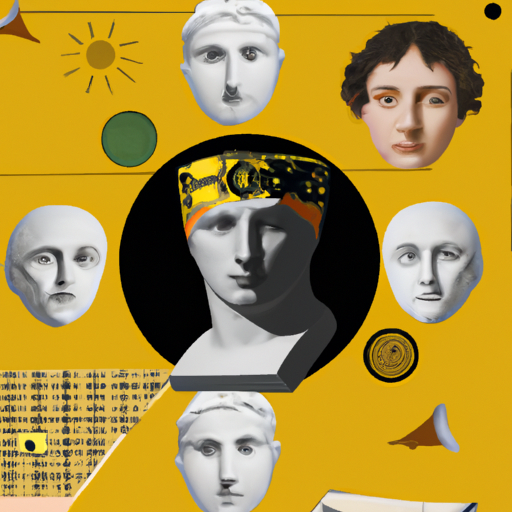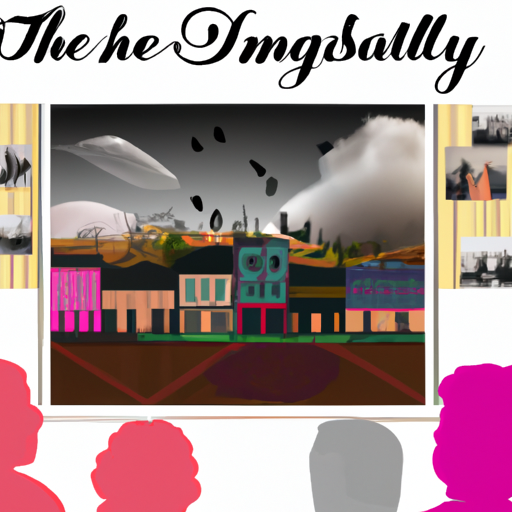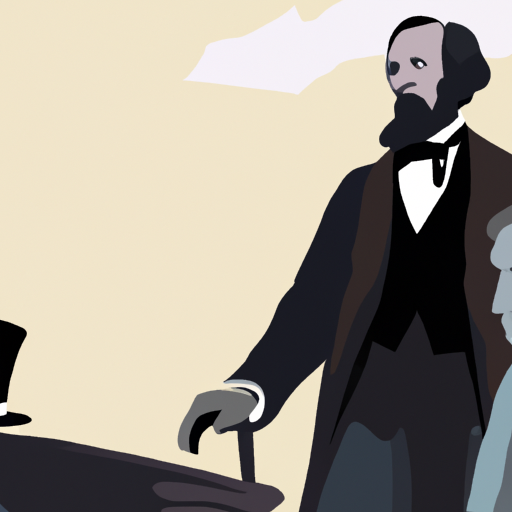History of Victorian Design: 3 Characteristics
Unearth the story of Victorian design with these ever-enduring qualities! Delve into a world of antiquity and behold the remnants of a bygone era. Explore the distinctiveness that has stood the test of time, resplendent in its classicism. Uncover these three characteristics that define this period’s aesthetic identity.

The allure of Victorian design is timeless. From ornate detailing to intricate craftsmanship, and luxurious materials, the era’s aesthetic identity has been admired for centuries. Elaborately carved furniture, elaborate architectural flourishes, delicate jewelry and ornamental clocks were crafted with precision and care by skilled artisans. Fabrics like velvet, silk and fine woods added opulence to any space or object they adorned. These three qualities have withstood the test of time and remain ever-enduring symbols of the period’s distinctiveness and classicism. Explore its history further and you too can appreciate why this era is so special!
.
Introduction

During the mid-to-late 19th century, a time of extraordinary invention and artistry in design, Victorian style emerged. Characterized by its roots in antiquity, intricate ornamentation, and lavish materials, this era saw the rise of new materials and techniques as well as an emphasis on florid details.
Drawing from past styles like Gothic architecture’s pointed arches and stained glass windows and classical Greco-Roman columns and pediments, Victorian design blended modernity with traditionalism to create a unique look. Ornamentation was also a major factor of this period; elaborate woodwork, metalwork, stained glass windows, tilework, and other intricate elements were used to generate an air of grandeur in homes and other structures.
In addition to these elements, luxurious materials such as velvet fabrics, marble surfaces, gilded mirrors, crystal chandeliers, and exotic woods were all popular choices for creating a timelessly opulent atmosphere. All these components combined to form the distinctive Victorian aesthetic still seen today.
– Exploring the Historical Roots of Victorian Design
Amidst the 19th century Industrial Revolution, design in England underwent a dramatic transformation. Mass-produced goods became available, and luxury and comfort were emphasized – all of which are evident in the intricate details of Victorian furniture. This style was heavily influenced by the Gothic Revival movement, which drew inspiration from medieval architecture and featured pointed arches, ribbed vaulting, stained glass windows and other decorative elements that were incorporated into furniture pieces. Additionally, Aestheticism had a major impact on Victorian design; it focused on creating objects that were beautiful for their own sake with intricate carvings or painted surfaces, fabrics adorned with delicate patterns or embroidery, vibrant colors and asymmetrical shapes. As a result of these two movements merging together, an iconic aesthetic has endured throughout the ages – one that is still recognizable today as Victorian design.
– Examining the Influences on Victorian Design
A period of grandeur and growth, the Victorian era saw a blending of various historical elements into its architecture, furniture, and decorative arts. From Greco-Roman motifs to Gothic Revival designs and Art Nouveau curves, these styles were intermingled to create a unique look. The Pre-Raphaelite Brotherhood also left their mark on the era’s art and design with medieval-inspired themes and symbolism. Industrialization also had an effect on the style of the age; mass production allowed for intricate details to be included in furniture pieces and home decor items. Furthermore, scientific advances during this time provided new ideas for design. All these components combined to form a one-of-a-kind aesthetic that still stands out today.
– Understanding the Evolution of Victorian Design Through History
Amidst the mid-19th century and 1901, the Victorian period was a time of colossal change in design. With the introduction of new technologies, mass production became feasible, leading to an increase in consumer demand for these products and fostering creativity and innovation in design. Additionally, materials such as iron and steel were employed in production, allowing for more intricate designs than those achievable with traditional materials like wood or stone.
The Aesthetic Movement further impacted Victorian design by promoting art and beauty as essential components of life. This resulted in a focus on creating beautiful objects rather than just utilitarian ones, emphasizing craftsmanship and attention to detail that is still visible today. Asymmetrical shapes replaced symmetrical ones while color and patterning were used more frequently in designs.
The Arts & Crafts Movement also had a significant impact on Victorian design by advocating handmade goods over those produced by machines and traditional craftsmanship techniques such as woodworking and metalworking over newer methods like mass production. The emphasis on quality craftsmanship combined with using natural materials helped create pieces that were both visually pleasing and durable enough to last.
By understanding the history behind Victorian design, we can gain insight into how it has evolved over time and how it continues to shape modern design today.
– Appreciating the Aesthetics of Victorian Design in History
A time of tremendous innovation and creativity, the 19th century Victorian era left behind a legacy of captivating design that has been admired throughout history. Furniture pieces were often ornately decorated with intricate carvings and detailed designs, while chairs were upholstered in luxurious fabrics like velvet or silk and adorned with tassels or fringe. Tables and cabinets boasted elaborate handles and knobs, while architecture featured tall towers, pointed arches, decorative moldings, and stained glass windows. Interior design also saw its fair share of bold patterns in wallpapers that could be customized to fit any room size or shape. Furniture was arranged symmetrically around focal points such as fireplaces or paintings to create a balanced aesthetic. Even today, many people continue to be enamored by the beauty and timelessness of Victorian design.
– Analyzing the Social Significance of Victorian Design in History
Amidst a time of great transition, the Victorian era (1837-1901) saw the emergence of a new design aesthetic. This style, characterized by intricate details, bold colors and ornate flourishes, was not only aesthetically pleasing but also had an enduring social significance.
The Industrial Revolution brought about drastic changes to people’s lives and work, resulting in a heightened demand for decorative objects in homes and public spaces. Designers of this era used their craft to express their values and beliefs about society through motifs that spoke to class structures and morality. In doing so, they helped shape how people viewed themselves and their place in the world. Materials used were often symbolic of wealth or status – some fabrics being seen as luxurious while others as more utilitarian.
Victorian design also played an important role in creating a sense of national identity. Through motifs such as floral patterns or classical imagery, designers were able to evoke feelings of patriotism among viewers – something which still resonates even today when looking back at these iconic designs from history.
Thus, it is clear that Victorian design was much more than just an aesthetic choice; its influence on societal norms and role in creating national identity are still evident today.
conclusion

An aesthetic of timelessness and classic beauty, Victorian design has been captivating the hearts and minds of admirers for centuries. With intricate details, ornate patterns, and traditional materials such as wood, stone, and brick, this style of interior and exterior architecture is sure to mesmerize all who behold it. A perfect blend of classic elements that create a unique look like no other.
.
Some questions with answers
Q1: What is Victorian design?
A1: Victorian design is a type of architecture and interior design that was popular during the reign of Queen Victoria in the 19th century.
Q2: What are 3 characteristics of Victorian design?
A2: Three characteristics of Victorian design are ornate decorations, intricate details, and a mix of various historical styles.
Q3: How did Victorian design influence modern architecture?
A3: Many modern architectural styles have been influenced by Victorian design, such as Gothic Revival and Neo-Gothic styles.
Q4: How can I learn more about Victorian design?
A4: You can learn more about Victorian design by researching books and articles on its history or visiting museums that feature examples of this style.
Q5: Where can I find examples of Victorian design?
A5: Examples of Victorian design can be found in many cities around the world, including London, New York City, San Francisco, Melbourne, and Toronto.





